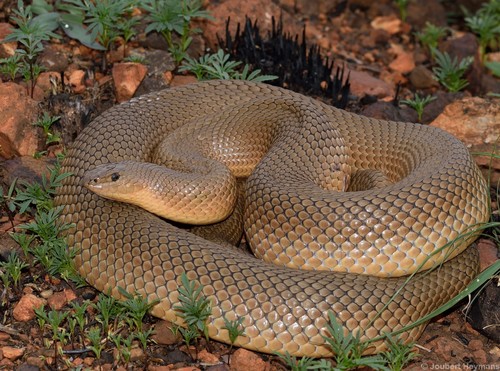
Mole Snake
The mole snake (Pseudaspis cana) is a formidable rodent hunter of southern Africa's grasslands. Reaching up to 2 meters, its sleek, earthy tones blend seamlessly into its burrowing lifestyle. Essential for pest control, this non-venomous snake is a silent guardian of the ecosystem's balance.
8-10 years
Lifespan
Length: 2.0736 m
Size
Brown, Red, Black
Color
Medium
Aggression
Least Concern
Conservation Status
Unknown
Population Trend
Characteristics
Pseudaspis cana, commonly known as the mole snake, is a large, non-venomous snake native to southern Africa. It can reach lengths of up to 2 meters and exhibits a smooth, uniform coloration that ranges from brown to gray. This species is known for its burrowing behavior, often preying on rodents and other small mammals. The mole snake plays a vital role in controlling pest populations and is frequently found in grasslands and savannas.
Distribution Range of the Mole Snake
Pseudaspis cana, commonly known as the African rock python, is native to sub-Saharan Africa. Its geographical distribution includes countries such as South Africa, Namibia, Botswana, Zimbabwe, Mozambique, and Angola. It is widely distributed across the southern parts of the African continent.
Mole Snake's Habitat
Environmental Conditions
The African rock python inhabits a variety of environments, including savannas, open woodland, grasslands, and scrublands. It is often found near water bodies such as rivers and lakes, as it is a semi-aquatic species. The climate in these regions is typically warm with distinct wet and dry seasons.
Ecological Niche
Pseudaspis cana occupies the ecological niche of a large, non-venomous constrictor. It plays a crucial role in controlling the populations of its prey, which includes small to medium-sized mammals, birds, and occasionally reptiles. Its adaptability to different environments allows it to thrive in various ecological zones across its range.
Copyright @ Nature Style Limited. All Rights Reserved.
 English
English